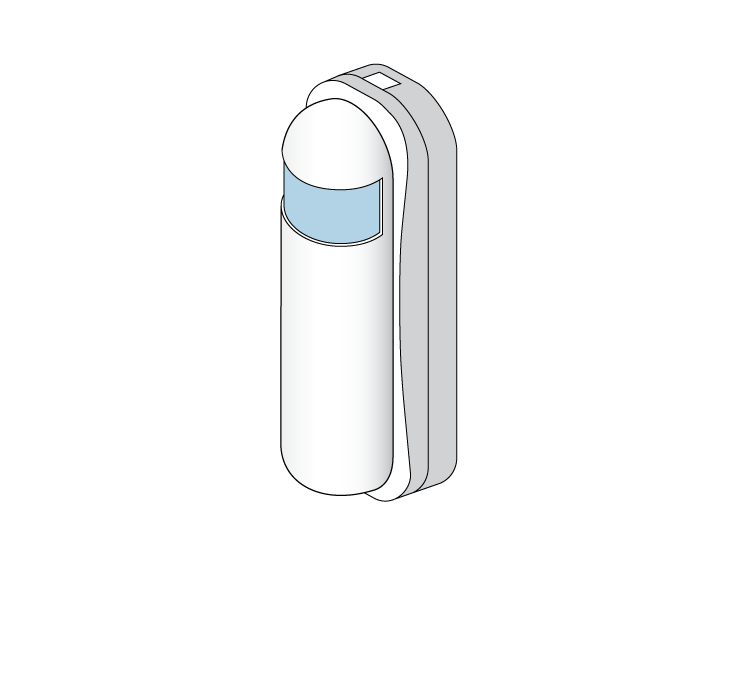The following explains how to re-add an existing Room Sensor to a Genius Hub That Depletes Batteries Quickly.
We have found that if some room sensors are not configured correctly when they are first included onto the system, they report the battery level every minute rather than every few hours, and this causes the battery to run down much faster than it should do. Normally we expect to get 2 years from the battery in a room sensor under normal operating conditions.
We suggest that you try to reconnect the room sensor to the system so that it can be reconfigured. This requires factory resetting it and then adding it back onto the system again as if it is a new device.
Make sure that the Room Sensor is within 2 meters (line of sight) of the Genius Hub. You may need to move the Genius Hub closer to the Room Sensor, the hub needs to be both plugged into the power and also the internet (see this link for how to connect the hub with a power-line ethernet adapter), you can also move the Room Sensor next to the Genius Hub if it is impossible to move the Genius Hub.
Remove the front cover of the Wireless Room Sensor by placing a tool (such as a flat-bladed screwdriver) into the top of the sensor until you hear a click. This will release the catch.
Use your nails to pull the white (front) of the room sensor away from the clear (back) and allow the cover to swing down (be careful not to pull the sensor off the wall).
The front is hinged at the bottom.
Ensure there is a new battery in the Room Sensor and it is correctly oriented.
Press the small switch at the top left of the circuit board 4 times within 1.5 seconds, and on the last press keep the switch pressed down.
The red light will illuminate and then extinguish.
As soon as the light turns off, release the button.
The red light will start to flash every second for 30 seconds if this has been done successfully.
Now the hub needs to get ready to add the device.
On the app tap on Menu, then Settings and then Devices. Now tap on 'Include device' and follow the prompts on the app.Press the little black button 3 times in exactly 1.5 seconds.
The red light will flash every second for 30 seconds or until added to the system.
To return the cover click it in at the bottom of the device and allow it to hinge up until there is a click as the top locks the cover in place.
On success, the Room Sensor has been assigned a number, write this number on the side of the device.
If the device has not been assigned a new number (i.e. different to the one written on the back of the device) then this procedure has not worked correctly. Try factory resetting the Room Sensor again.
The success or failure of the inclusion will be displayed on the app.Now you need to finish the steps here and then add the Room Sensor to a corresponding zone on the app.
If it is measuring the temperature/occupancy for a room with radiators, electric heating or a zone of underfloor heating, go to the 'Home Screen', tap on the corresponding zone, tap on 'Zone Setup' (under the menu ••• ), tap on 'Assign Device' at the bottom and choose the Room Sensor which is located in the zone that you are trying to control.
You also need to delete the old Room Sensor from the list of devices as this no longer exists.
Go to the devices page (tap the 'Main Menu', then 'Settings', then 'Devices').
Tap on the ••• and then 'Ping' - this tells the hub that the Room Sensor is not there as it will not reply to the ping.
Tap on 'Remove Dead Node' - this will remove the Room Sensor from the list.
Do not unplug the Genius Hub for at least 30 minutes so the hub has time to save the new settings.
Tips for locating the Room Sensor correctly:
Select the thick, black (temporary) sticky pad, or thin white (permanent) sticky pad and attach it to the back of the Room Sensor.
• At chest height (so it measures the correct temperature and picks up the best occupancy).
•• The vision of the room sensor is 170º left to right and 40º up and down, but it is most sensitive in the middle 90º, so make sure it can see you.
• On an internal wall (so it measures the correct temperature and is not affected by being on a cold surface).
•• Use the temporary pads permanently if this is an issue as it raises the sensor away from the wall slightly.
• Not next to any direct sources of heat (so that it measures the temperature of the zone and is not affected immediately by a heat source in the room).
• Not pointing at a direct source of heating or a window (this will affect the detection sensitivity of the sensor or will cause false triggers from people outside the window).
In rooms where people are sat or still make sure that the sensor is close to the areas where people are seated.
